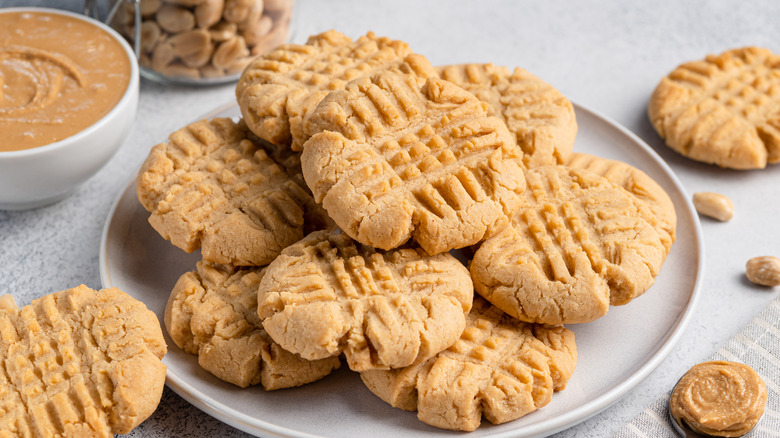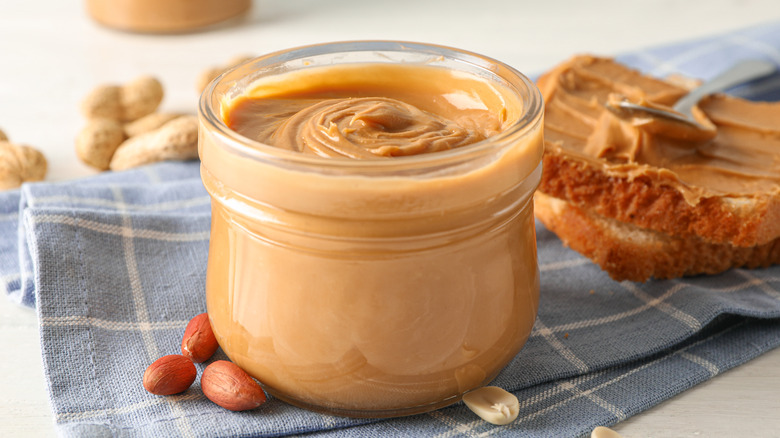Should You Use Salted Or Unsalted Peanut Butter In Cookies?
Sweet, salty, and irresistible, peanut butter cookies may just be the perfect treat.
Dating back to the early 1900s, George Washington Carver helped popularize the peanut butter cookie. A member of Alabama's Tuskegee Institute, Carver created a cookbook called "How to Grow the Peanut and 105 Ways of Preparing it for Human Consumption" in hopes of spreading the word on the crop. Unlike the cookies you likely whip up today, the recipes featured in Carter's book used chopped peanuts; it wasn't until the 1930s that peanut butter became the cookies' namesake ingredient.
Because there are so many different kinds of peanut butter – from chunky to natural to sugar-free — it can be hard to know which works best for your recipe. However, when it comes to salted versus unsalted, there's a clear winner.
Use salted peanut butter for better cookies
Salted peanut butter works best in peanut butter cookies as it reduces the amount of extra salt you need to add to your recipe. Salt enhances the flavors of the ingredients it's alongside, making your cookies that much more delicious.
Commercially-jarred peanut butters — such as Skippy, Peter Pan, or Jif — are the better choice for your cookies compared to natural peanut butters, as they contain added ingredients to create their unique consistency and flavor. While natural peanut butter is great for eating, it can produce a crumbly cookie dough. Your preference of crunchy or creamy is completely up to you: Crunchy will add a slight bite to your cookies and creamy will create a silky smooth texture.
And if you find yourself midway through whipping up a batch and only have unsalted peanut butter, don't fret — simply add in a sprinkling of salt to make up for it.

